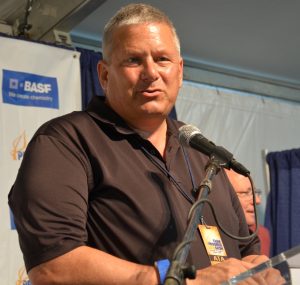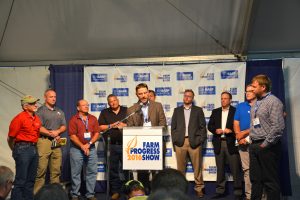 The USDA’s Natural Resources Conservation Service is responding to customer and partner input. They are announcing an update to the Conservation Stewardship Program (CSP), the nation’s largest conservation program based on acres. During the new enrollment period later this year CSP will be offering producers more options for improving conditions on working lands.
The USDA’s Natural Resources Conservation Service is responding to customer and partner input. They are announcing an update to the Conservation Stewardship Program (CSP), the nation’s largest conservation program based on acres. During the new enrollment period later this year CSP will be offering producers more options for improving conditions on working lands.
“After hearing from farmers, ranchers, and partners who wanted to see improvements to the Conservation Stewardship Program, we’re launching this update to make a successful program work even better,” said NRCS Chief Jason Weller. “We’ve redesigned the program to provide for greater local involvement, offer more opportunities for conservation and innovation on working lands, and make the connection between actions and outcomes more accessible to producers. Together, we can help those that grow our food and fiber take conservation efforts on working lands to the next level.”
Updates to the program will help make CSP more accessible and transparent by helping producers better evaluate their conservation options and the impact to their operations. NRCS has developed new CSP tools that function similarly to other standard NRCS tools, which will better integrate CSP into the suite of NRCS conservation programs. With these new tools, producers will be able to see up front why they are or are not meeting stewardship thresholds, allowing them to pick practices and enhancements that work for their conservation objectives.
The new tools also allow producers to see potential payment scenarios for conservation early in the process, allowing them to better evaluate their conservation options. NRCS has addressed producer and stakeholder input requesting greater flexibility to address local resource concerns. Now, NRCS will more effectively utilize input from farmers, ranchers and partners in State Technical Committees and local workgroups to inform and expand conservation strategies under the program. Producers will be better prepared to apply because they will know these local ranking priorities and targeted resource concerns in advance.
“A lot has happened in agriculture and conservation since 2010, and the new CSP allows producers to take advantage of new techniques and technologies to increase conservation while boosting production,” Weller said. “Through the incorporation of new practices and enhancements, we’re making CSP work for more people across the country.”
The updates will nearly double conservation opportunities. New practices are taking into account emerging trends, like using gypsum as a soil amendment, supporting the production of biochar after wildfire or fuel reduction harvests, offering enhancements for on-site carbon storage and expanding monarch habitats.
More information about the improvements will be provided later this year. Producers interested in the program can find at more at www.nrcs.usda.gov/csp or visit their local USDA Service Center.
 Farmers need to start thinking differently about plant yields, says Larry Lintner of Stoller. The inside-the-box approach of managing NP&K and handling weed pressure isn’t enough to truly get that-high-end yield potential out of a plant. Instead he encourages growers to use plant science from germination to harvest to keep the plant healthy, balance hormones, and make yields align to the expectations of the grower.
Farmers need to start thinking differently about plant yields, says Larry Lintner of Stoller. The inside-the-box approach of managing NP&K and handling weed pressure isn’t enough to truly get that-high-end yield potential out of a plant. Instead he encourages growers to use plant science from germination to harvest to keep the plant healthy, balance hormones, and make yields align to the expectations of the grower. These steps helped develop the soybean plants on display at the Farm Progress Show; soybeans grown by Dan Arkels that are expected to break well over the 100 bushel mark. It also led to corn jumping out of the ground early to achieve results worth displaying.
These steps helped develop the soybean plants on display at the Farm Progress Show; soybeans grown by Dan Arkels that are expected to break well over the 100 bushel mark. It also led to corn jumping out of the ground early to achieve results worth displaying.













